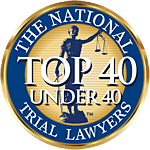From Multitasking to Daydreaming: NJ’s Distracted Driving Accidents

Distracted driving has become a major concern on roads across the country, especially in New Jersey. With the increasing prevalence of smartphones, the temptation to engage in distracting behaviors while behind the wheel has grown. Distracted driving can have devastating consequences, leading to accidents, injuries, and even the loss of life. In this article, we will explore what constitutes distracted driving, common distracted behaviors, signs of a distracted driver, tips for recognizing them on the road, how negligence is proven in distracted driving cases, why teens and young adults are at higher risk, and steps that can be taken to reduce distracted driving accidents.
What is Distracted Driving?
Distracted driving refers to any activity that takes a driver’s attention away from the road. This can include visual, manual, or cognitive distractions. Visual distractions involve taking one’s eyes off the road, while manual distractions involve removing one’s hands from the steering wheel. Cognitive distractions, on the other hand, divert the driver’s focus and attention away from driving.
Common Distracted Driving Behaviors
There are several behaviors that contribute to distracted driving accidents. These include:
- Smartphone Use: Texting, talking, FaceTime, recording, or browsing the internet on a mobile device
- Eating and Drinking: Consuming food or beverages while driving
- Passenger Distractions: Interacting with passengers, especially children
- Grooming: Applying makeup, shaving, or fixing hair
- Adjusting Controls: Changing radio stations, adjusting the GPS, or temperature controls
- Daydreaming: Allowing the mind to wander away from the task of driving
Signs of a Distracted Driver
Identifying a distracted driver on the road can be crucial to preventing accidents. Some signs that may indicate a driver is distracted include:
- Drifting between lanes or straddling the center line
- Inconsistent or fluctuating speed
- Failing to use turn signals or disregarding other traffic rules
- Delayed reaction times to traffic signals or other road signs
- Slow response to changes in traffic conditions
- Preoccupied or unfocused expression
- Abrupt braking or acceleration
- Erratic or jerky steering movements
- Failure to maintain a consistent, safe following distance
Tips For Recognizing a Distracted Driver on the Road:
1. Pay Attention To Their Behavior:
Look for signs mentioned earlier, such as drifting between lanes, inconsistent speed, or delayed reactions.
2. Observe Unusual Driving Patterns:
If you notice a driver repeatedly looking down, fidgeting, or not paying attention to the road, it may indicate distraction.
3. Be Cautious Around Stopped Vehicles:
Drivers who are distracted may not respond immediately when traffic starts moving again.
4. Watch For Sudden Or Unexpected Maneuvers:
Distracted drivers may make abrupt lane changes or fail to yield appropriately.
How is Negligence Proven for Distracted Driving?
In cases involving distracted driving accidents, negligence must be proven to hold the responsible party accountable. To establish negligence, the following elements must generally be demonstrated:
1. Duty of Care: Drivers have a legal obligation to operate their vehicle safely and responsibly, without distraction.
2. Breach of Duty: The driver failed to exercise reasonable care by engaging in a distracting activity while driving.
3. Causation: The distracted driver’s behavior directly caused or significantly contributed to the accident and resulted in injuries or damages.
4. Damages: The accident resulted in measurable damages, such as medical expenses, physical injuries, property damage, pain and suffering, lost wages, or other quantifiable harm.
Why Are Teens and Young Adults at Higher Risk of Distracted Driving?
- Inexperience: Newly licensed drivers may struggle to manage multiple tasks and distractions while driving.
- Peer Pressure: Young drivers are more susceptible to peer influence, including using cell phones or engaging in other distracting or risky behaviors.
- Smartphone Dependency: Younger drivers are more likely to be heavily reliant on technology, making it tempting to use while driving.
- Impulsiveness: Younger individuals may have a tendency to take risks and engage in impulsive behaviors, including distracted driving.
- Lack of Awareness: Many young drivers underestimate the risks associated with distracted driving and overestimate their ability to multitask.
Steps to Reduce Distracted Driving
To combat the growing problem of distracted driving, we must take proactive measures. Here are some steps we can all take to reduce the incidence of distracted driving accidents:
1. Practice Personal Responsibility: As drivers, we must commit to focusing solely on the road while behind the wheel.
2. Educate and Raise Awareness: Schools, community organizations, and law enforcement agencies should work together to educate the public about the dangers of distracted driving.
3. Promote Safe Driving Habits: Encourage the use of hands-free technologies, such as voice-activated Bluetooth, for phone calls and advocate for safer alternatives, like designated texters or designated driving services.
4. Passengers’ Responsibility: Passengers should refrain from distracting the driver and assist in maintaining focus on the road.
5. Lead By Example: Parents, guardians, and older siblings should lead by example and avoid distracted driving themselves.
6. Open Communication: Discuss the risks and consequences of distracted driving with friends, family, and colleagues.
Seeking Legal Representation:
If you or a loved one has been involved in a distracted driving accident, it is crucial to seek legal representation to protect your rights and pursue compensation for your damages. Experienced attorneys can guide you through the legal process, investigate the accident, gather evidence, establish negligence, and advocate for your best interests in pursuit of compensation for medical expenses, lost wages, pain and suffering, and other damages.
Key Takeaway:
Distracted driving poses a significant threat to road safety in New Jersey. By understanding what constitutes distracted driving, recognizing the signs, and taking steps to reduce distractions, we can work towards making our roads safer. In the unfortunate event of a distracted driving accident, seeking legal representation from a reputable firm like Drazin & Warshaw can ensure that your rights are protected and help you navigate the legal complexities associated with such cases. Stay alert, stay focused, and let’s work together to prevent distracted driving accidents and their devastating consequences.
Contact Drazin & Warshaw Today for a Free Consultation About Your Motor Vehicle Accident
When it comes to motor vehicle accidents caused by distracted driving, Drazin & Warshaw understands the physical, emotional, and financial burdens you may be facing. Our experienced lawyers have a deep understanding of the laws surrounding distracted driving accidents and will fight tirelessly to protect your rights and seek the compensation you deserve.
With our in-depth knowledge of personal injury law and a track record of success, we will diligently investigate your case, gather compelling evidence, and build a strong legal strategy tailored to your specific situation. Our goal is to secure the maximum compensation possible, allowing you to focus on your recovery and rebuilding your life.
At Drazin & Warshaw, we believe in personalized attention and compassionate representation. We will be by your side every step of the way, providing guidance, support, and unwavering advocacy. You can trust that we will always prioritize your best interests and fight relentlessly to ensure justice is served.
Don’t let a distracted driving accident define your future. Take the first step toward justice and fair compensation. Contact us today for a free consultation. Together, we will strive to secure the fair and just resolution you need to move forward with your life.








